1lumen selects and reviews products personally. We may earn affiliate commissions through our links, which help support our testing.
Cyansky P10 review
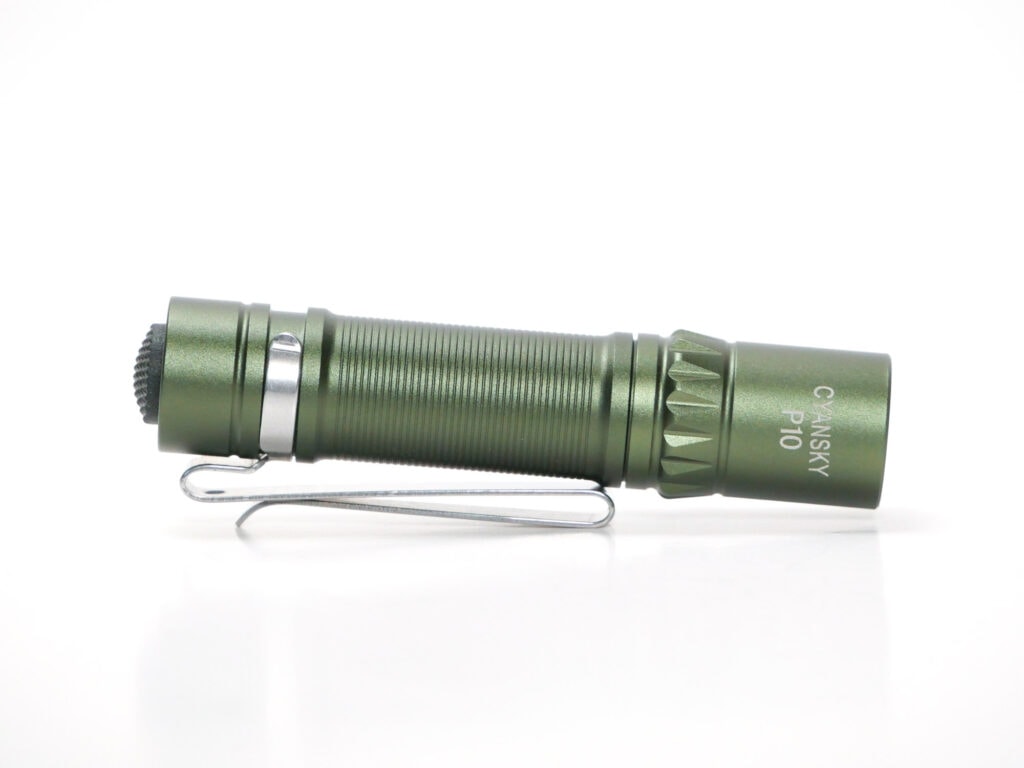
Cyansky P10 specs
| Brand & Model | Cyansky P10 |
|---|---|
| Flashlight category | EDC / Pocket Light |
| LED | OSRAM P9 |
| Max. output | 300 lumens |
| Max. beam distance | 60 meters |
| Max. beam intensity | 1122 cd |
| Battery config. | 1* AA (Alkaline or NI-MH) |
| Onboard charging | No |
| Modes | 3 |
| Blinkies | N/A |
| Waterproof | IP68 |
| Review publication date | April 2023 |
Review intro:
I was intrigued to see the Cyansky P10 because I’m a huge fan of pocketable flashlights. I have countless Olight i5Rs, i5Ts, and even i3Ts (Some of them even being driver swapped and custom lights). In addition to that, I currently have every colorway of the Acebeam of Pokelit AA and I was very excited to see what Cyansky could bring to this particular domain of flashlight. The very first thing I noticed about the P10, is the fact that it has a much different TIR optic than I’m used to seeing. I’m intrigued to see if this affects the beam pattern for the better, or for the worse. Let’s dive in and see If we have a real pocket EDC flashlight contender on our hands or if Cyansky should stick to what they know.
Package quality.
The P10 comes in a cardboard hang style tab box that shows each of the current colorways on the front. Front and center is the green which we have here for review, along with the black and red. I talk about these colors because there’s a small blue dot underneath to indicate inside the package what you should be receiving. On the back of the box, you don’t see any of the product specifications, but instead a QR code that will send you to the Cyansky website. Inside, the flashlight is held in place securely by a plastic insert and behind that a plastic bag with all of your accessories. All in, your box will include:
- Cyansky P10
- User Manual
- Warranty Card
- Lanyard
- 2 Spare O-Rings
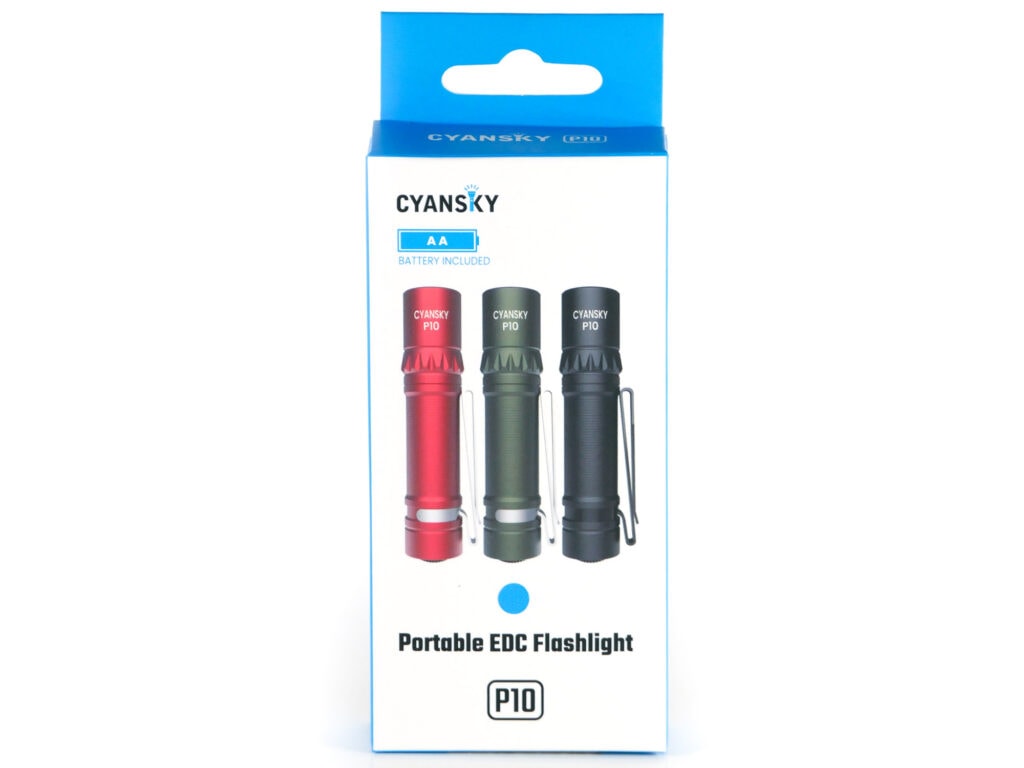
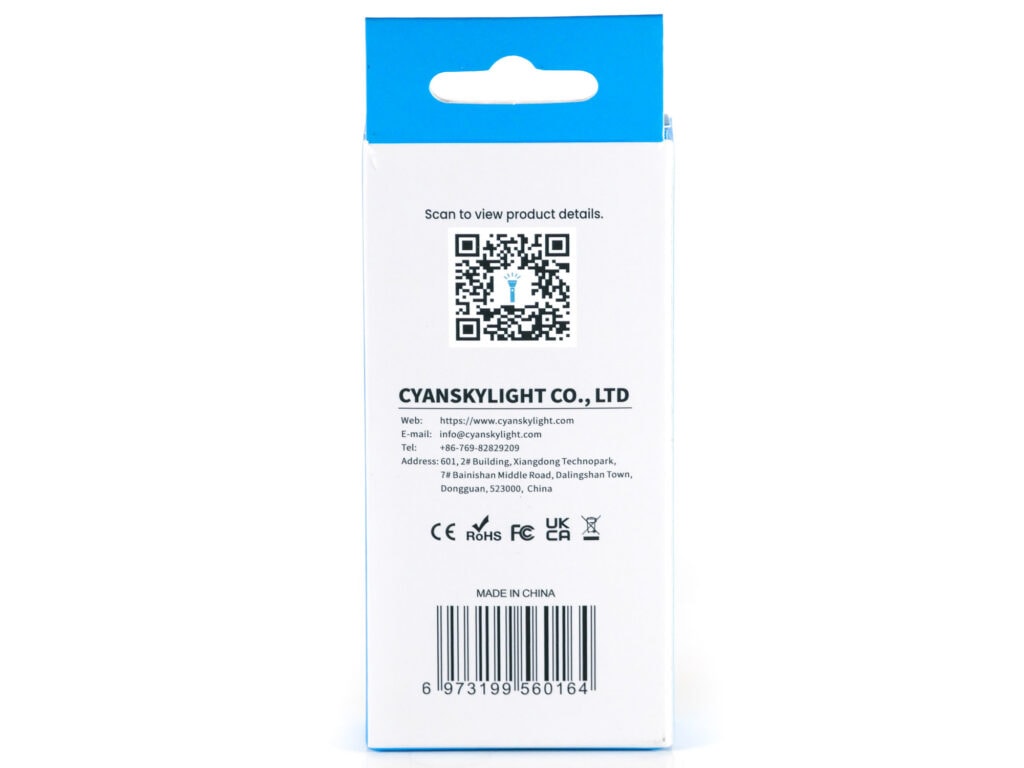
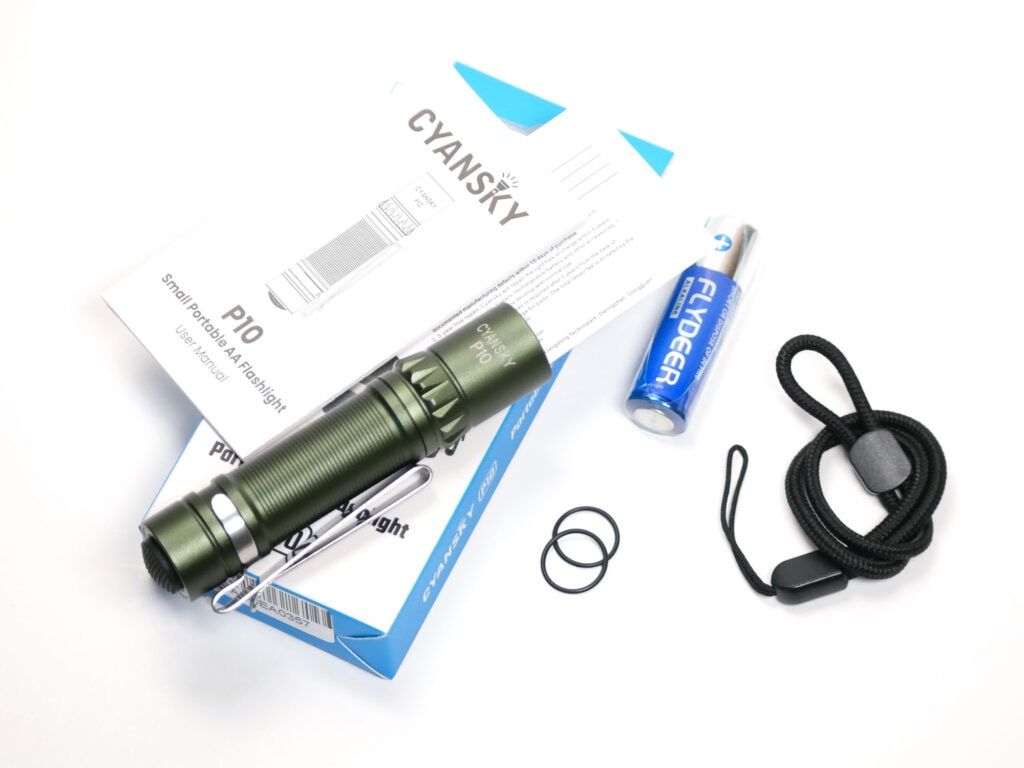
Flashlight in use
If you’re holding the P10 in your hand, in the right orientation, it feels fantastic. Using a tactical grip with the pocket clip facing towards the palm, it just fits in there ever so nice. The forward clicky switch requires very little movement in order to select and change modes, but you are met with quite a bit of resistance as soon as you want to fully engage your chosen mode with a click.
Additionally, the rear switch is covered in silicon to ensure you have more than adequate grip in any and all scenarios in which you could find yourself. Since it is a single AA battery pocket light, you can guess that it would fit in your pocket pretty easily. Standing shorter than both the Olight i5 series and the Acebeam Pokelit AA, it hides pretty well.
There are no recesses in the tail cap so it won’t tail stand, but it does have a two-way pocket clip with a deep throat which helps aid the light in hiding very well in your trouser pocket. About 2 cm below the bezel there is a collar of sorts but there are so many ridges that it wouldn’t stop the light from rolling unless things were very little to no movement. With a proud switch, you’re not going to get any magnetic adhesion to ferrous metals, but to hold it more secure, you can use the hole in the pocket clip to attach the lanyard.
With its small size and easy to use interface, this is an easily giftable light if that’s your thing, or would make a fantastic backup or ‘light carry’ choice. If you need to do small tasks around the house or check something under the hood of your vehicle, these small form factor lights can’t be beat
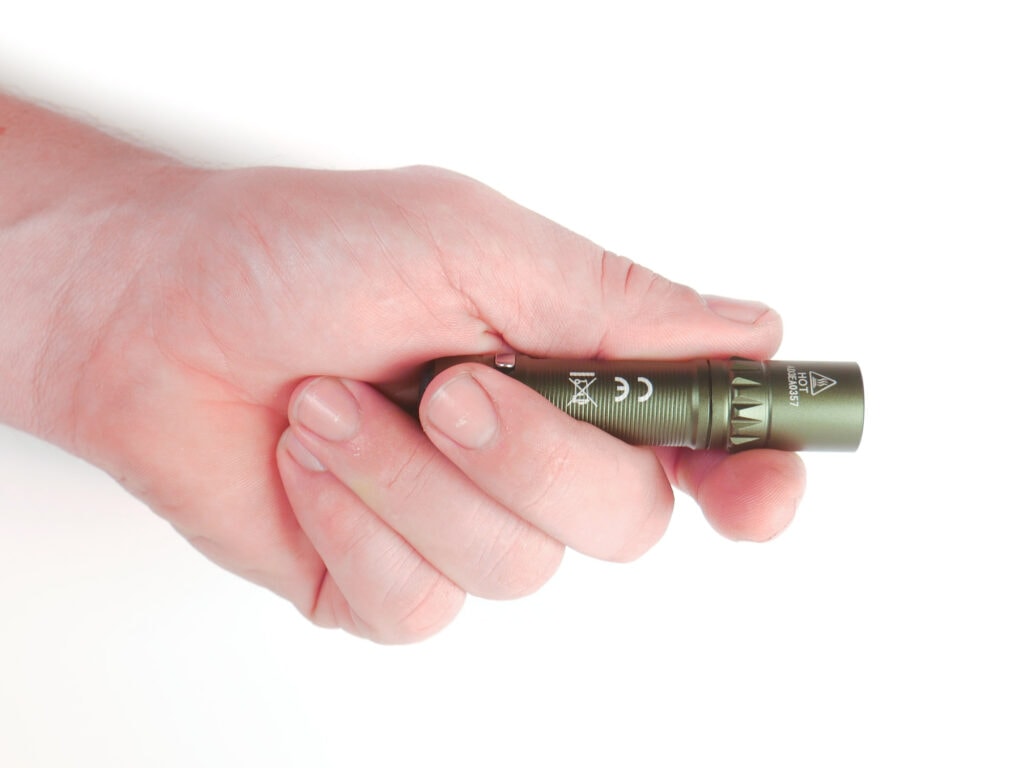
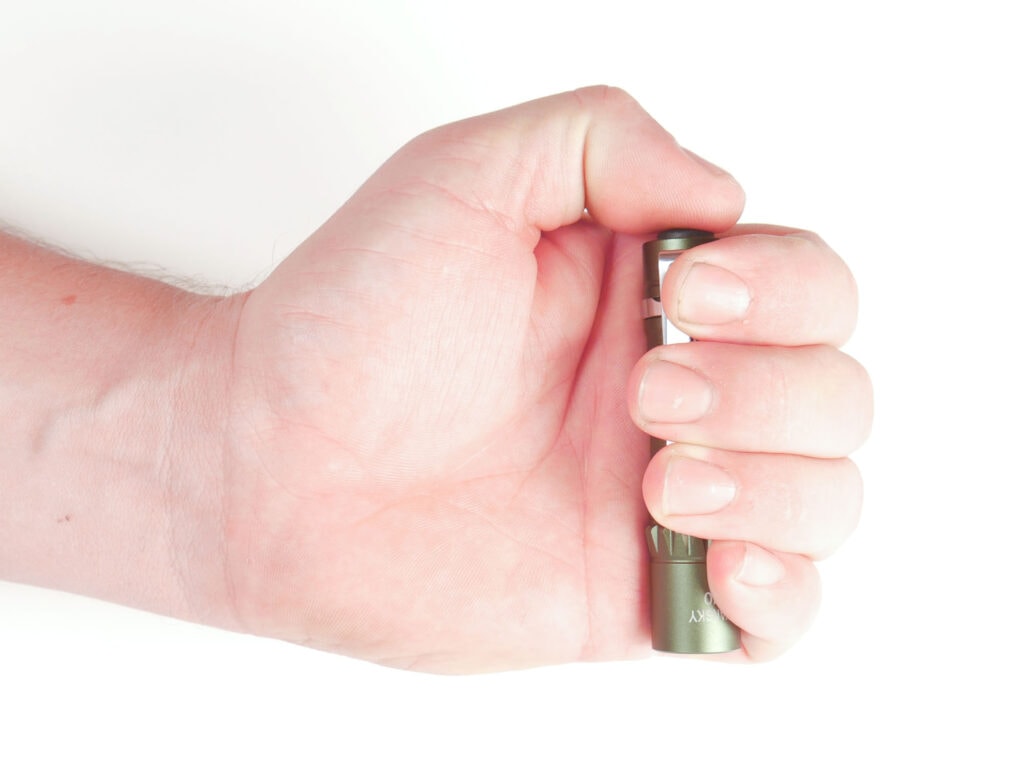
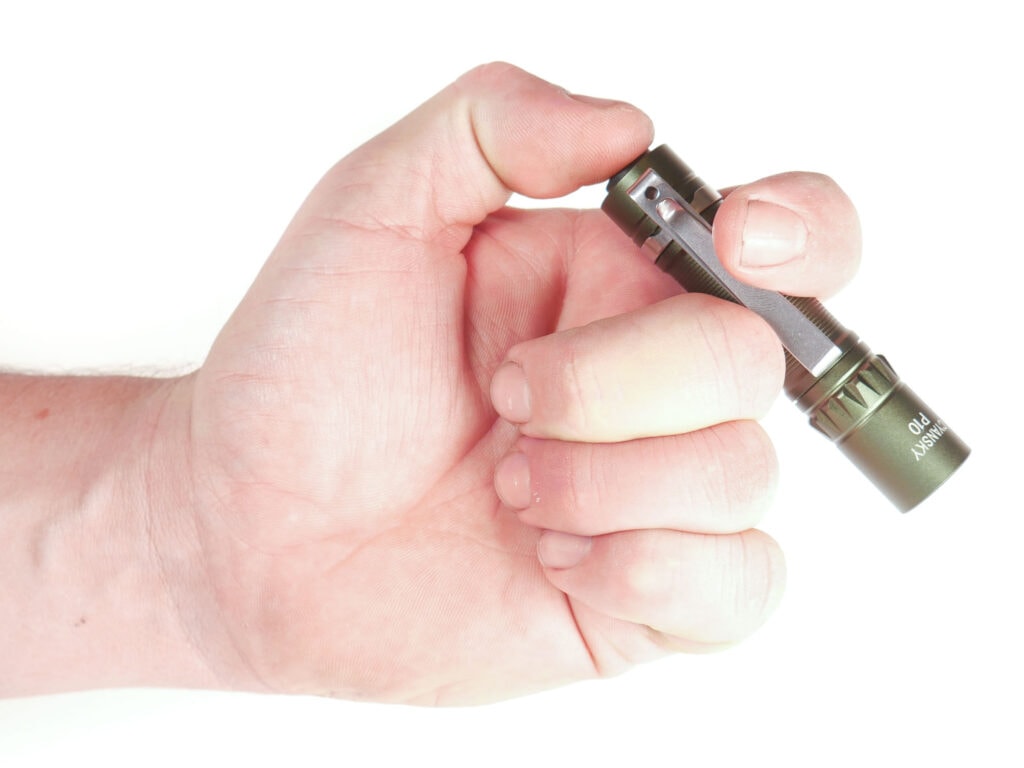
Build Quality and Warranty
In most regards, the build quality is quite nice. The body has very shallow ridges that do provide grip, but if your hands are oily, I would suspect that the additional grip would be negated. The collar I spoke of earlier would, in my opinion, would have made more sense near the tailcap instead of the bezel. This would facilitate a ‘cigar grip’ and give much more usability. I could find anything on the websites specifically about the materials used, so I have to assume this is also 6061 Aluminum.
The finish is what I would consider the very definition of the word satin, and in my particular case, it is done very evenly in OD green. Currently, there are also red and black options and this marks the most expansive colorway of any Cyansky light that I know of. Unfortunately the anodization on this one, even though it says to be type 3 HA is already showing signs of wear. This is underneath the pocket clip and is most likely due to the fact that it is more on the loose side and slides around. The anodizing underneath is already worn off in some spots.
The tail cap is glued on so the only means you have of replacing the battery is by taking off the head. Doing so is smooth because the triangular cut threads are also anodized and they seem to be holding up very well. These threads also give you the option to lock out the light by giving a small twist of the head. The pocket clip also has a hole near the throat and allows you to easily attach your lanyard. The lanyard is quite generic but seems like it would hold up well and did not break under any of my ‘rigorous pull tests’.
Other than the incredibly thin anodizing and the loose pocket clip, I can’t find any issues with the body on this light. If you do have issues with yours, you’ll be glad to know that Cyansky does offer a 15-day free replacement as well as a 5-year warranty if your product has any quality problems under normal use.
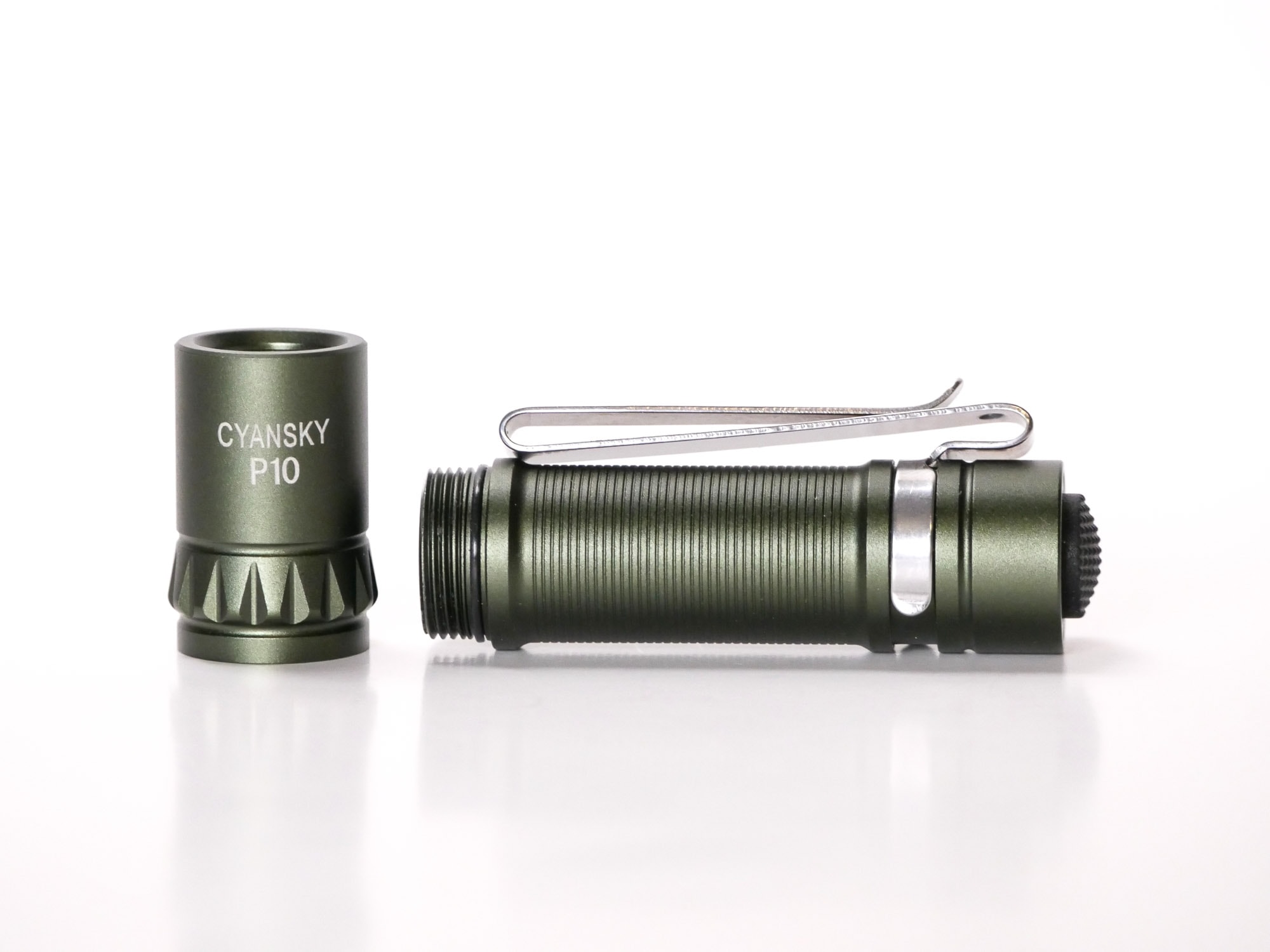
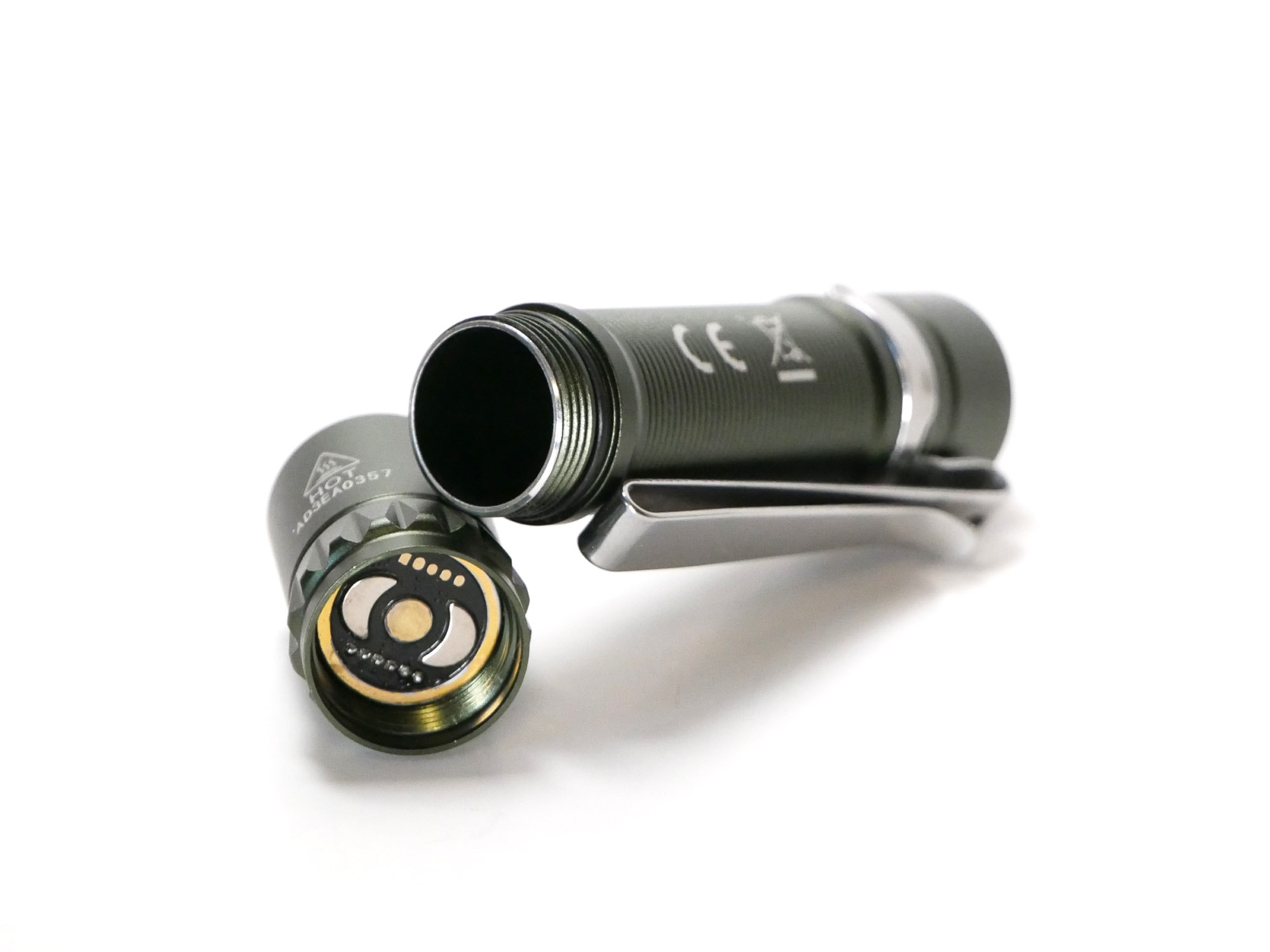
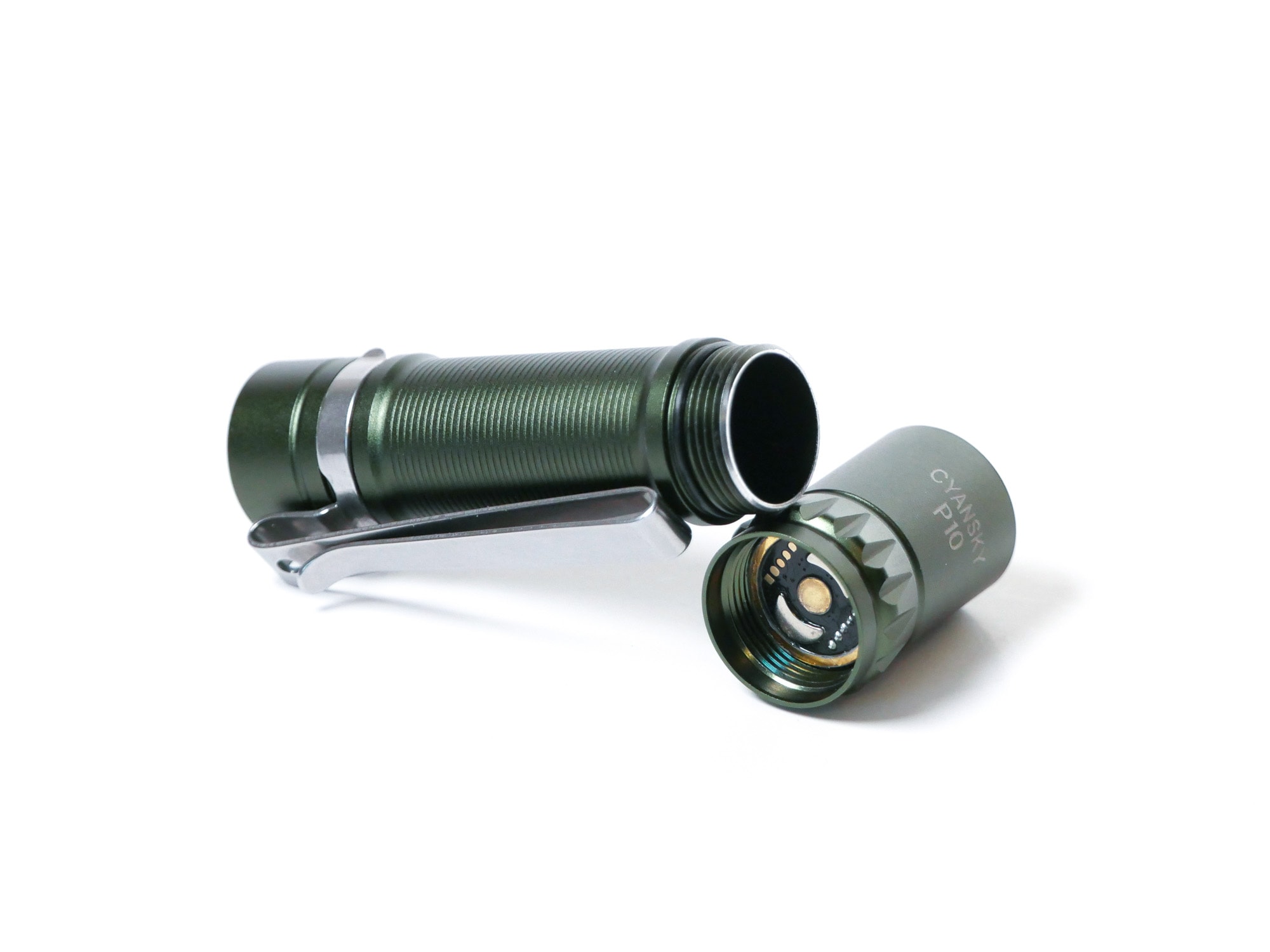

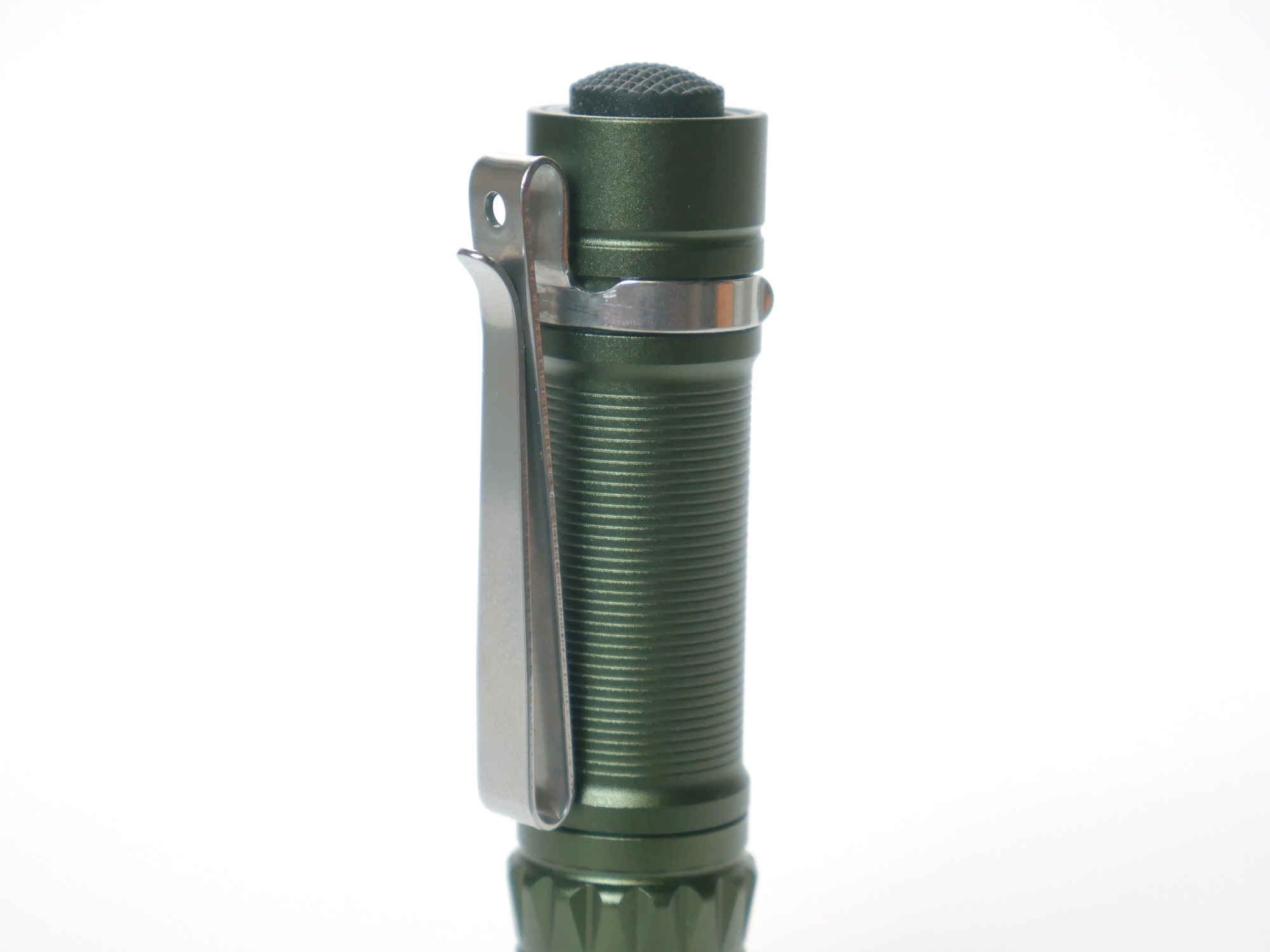
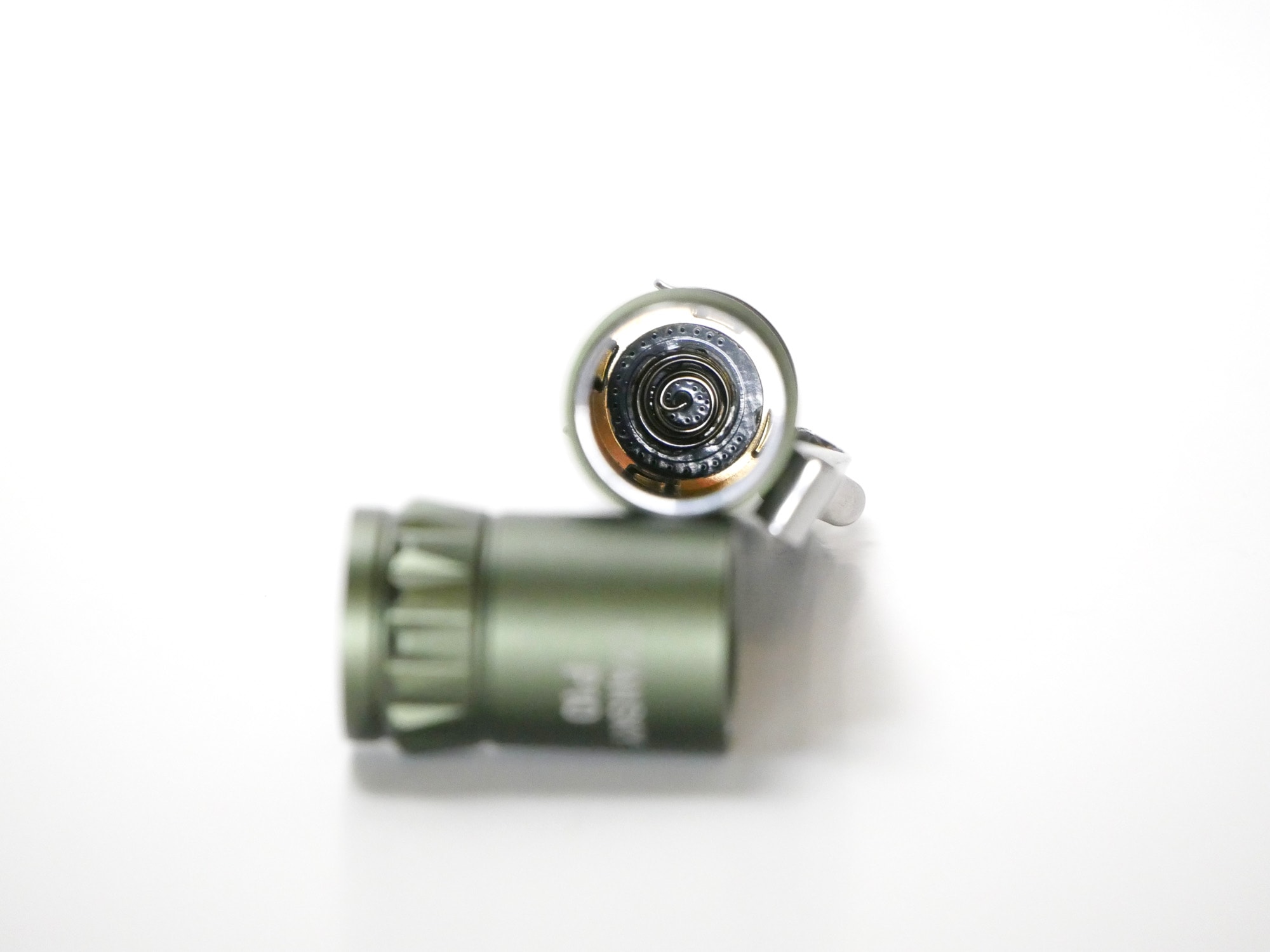
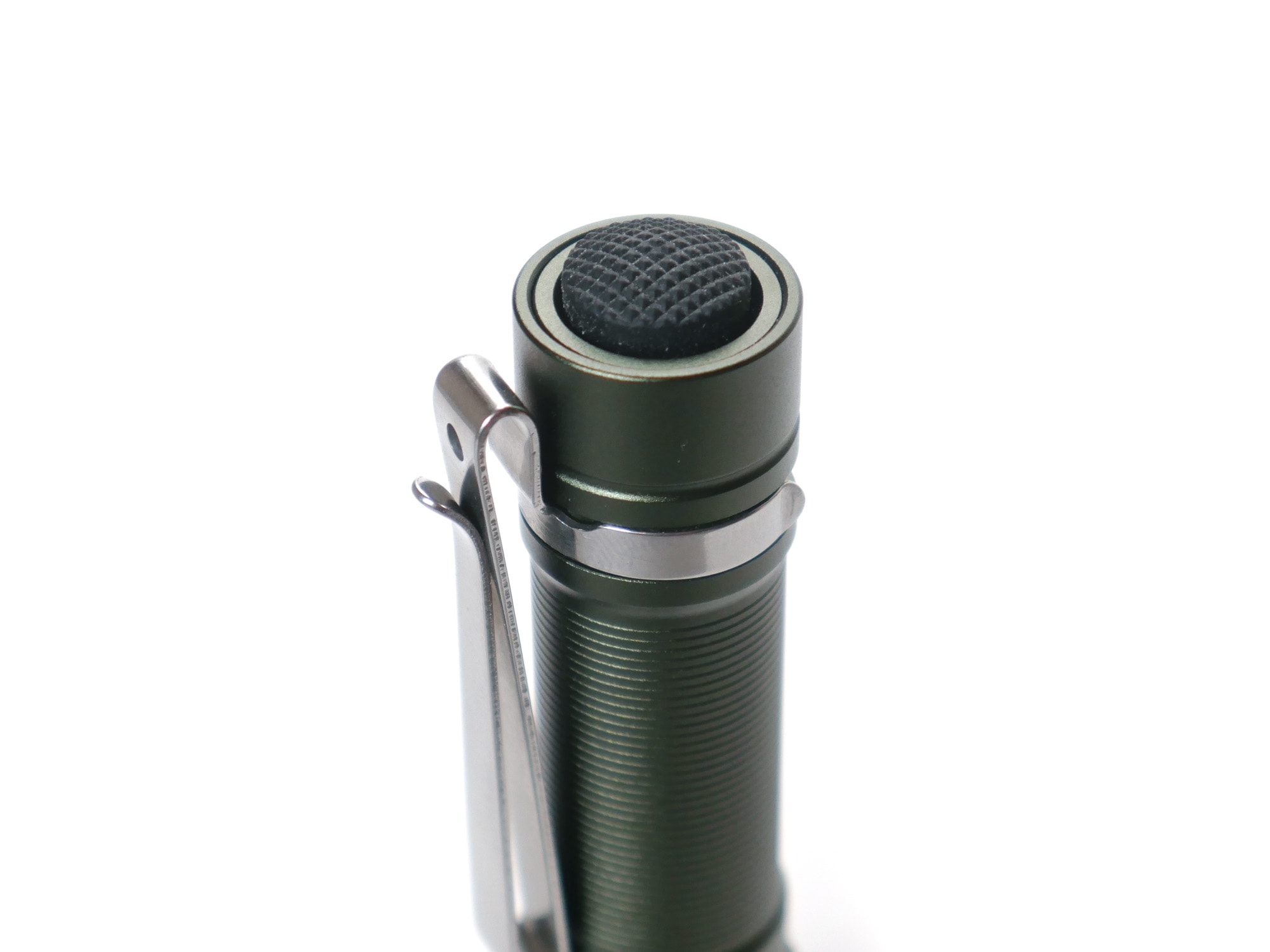
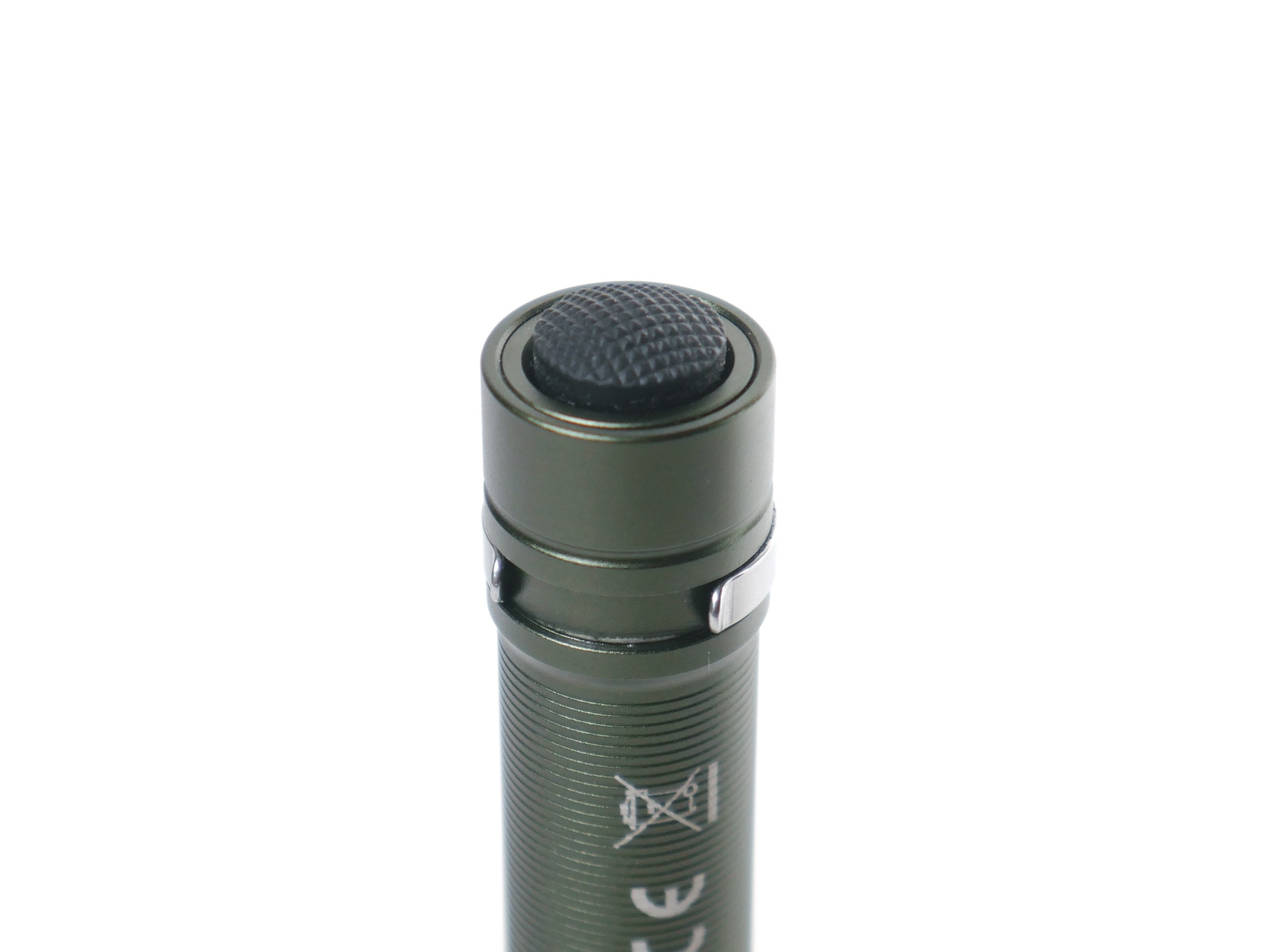
LED, Lens, Bezel, Beam, and Reflector
The Cyansky P10 has an OSRAM DURIS P9 emitter sitting behind one of the most narrow TIR optics I have ever laid my eyes on. But first, the aluminum bezel is an extension of the head and wraps around the lens and there is a rather large bevel to help keep said lens protected. This is further protected (what I can assume to be) a glass lens. I am not certain, but it is definitely harder than a standard plastic lens and feels like it. I don’t see any artifacts in the lens and things generally look in good shape.
The actual LED came in 5800k using my Opple lightmaster pro and just over 71 CRI Ra at its peak performance. The beam is considerably softer than I would have guessed, based on the optics. The hotspot is very soft but still doesn’t give much of a corona. The spill dies off just as uneventfully. It, too, is quite soft. In fact, if you didn’t know any better, you would swear that there are just a lot of reflections from the hotspot, instead of carrying the intentional design of a ‘soft spill’.
Overall, I would think less of this, but the beam appears relatively neutral. Calculating the DUV, this does come in above BBL, but just barely so, at .0066 It leans slightly more towards the green side of things, but at such a miniscule amount, that it’s basically a wash. This is the best coloring from an OSRAM P9 I have seen to date, but could be better with a more focused or more floody optic. Right now, it seems like it doesn’t know what it wants to do.
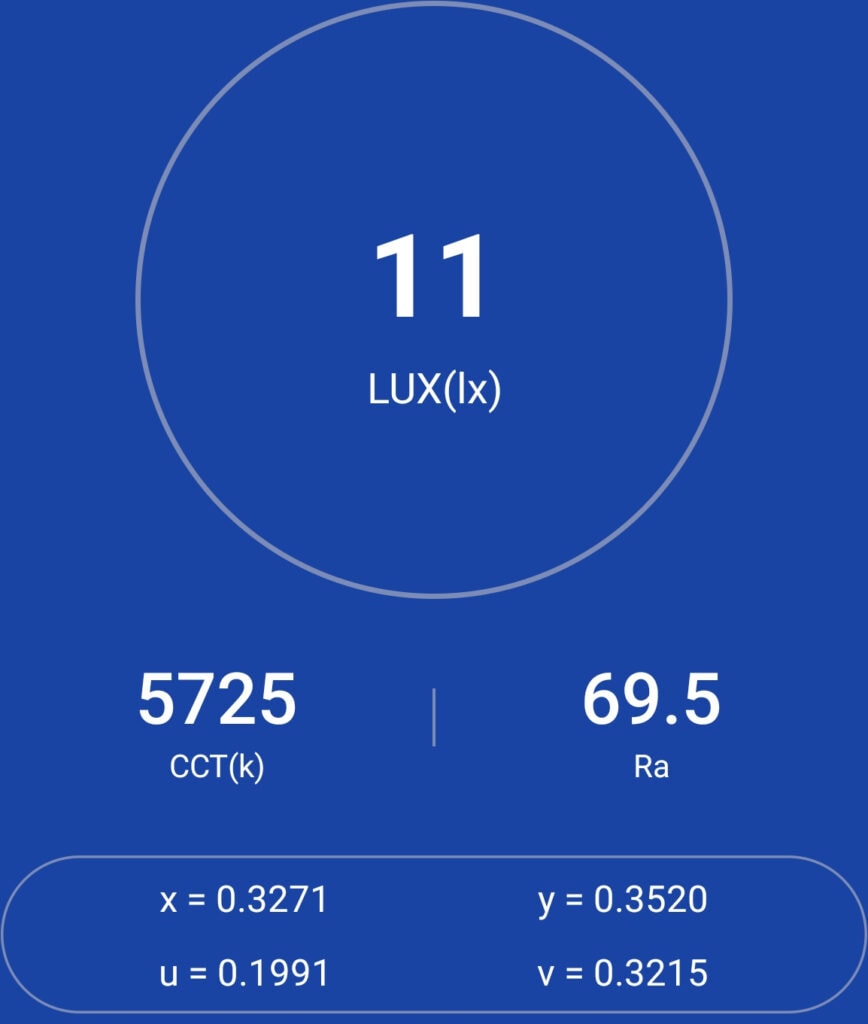
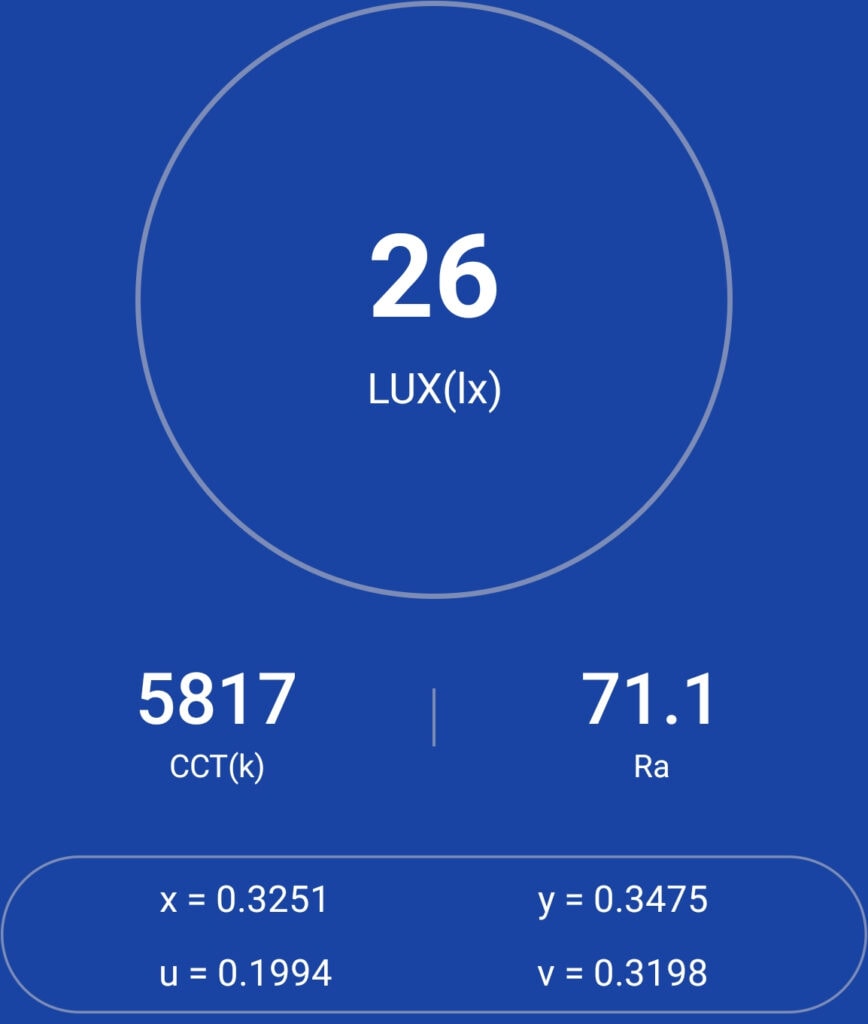
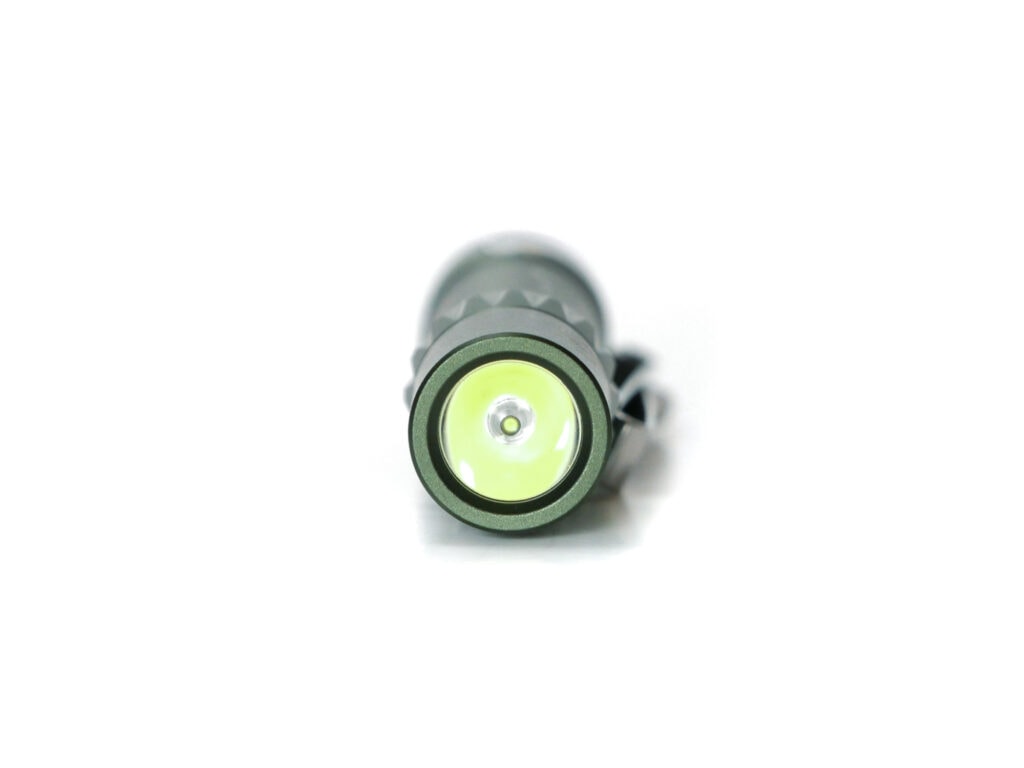
Dimensions and its competition
Dimensions:
| Cyansky P10 | Millimeters | Inches |
|---|---|---|
| Length | 89 mm | 3.5 in |
| Head diameter | 21 mm | .8 in |
| Body diameter | 18 mm | .7 in |
Dimensions are rounded to the nearest millimeter, and to the nearest tenth of an Inch.
Weight:
| Cyansky P10 | Weight in grams | Weight in oz |
|---|---|---|
| Without battery: | 31 g | 1.1 oz |
| With battery | 55 g | 1.9 oz |
Weight is rounded to the nearest gram, and to the nearest tenth of an Oz.
Flashlight size comparison with its competition:
Group 1: Cyansky P10, Acebeam Pokelit AA, Olight i5T
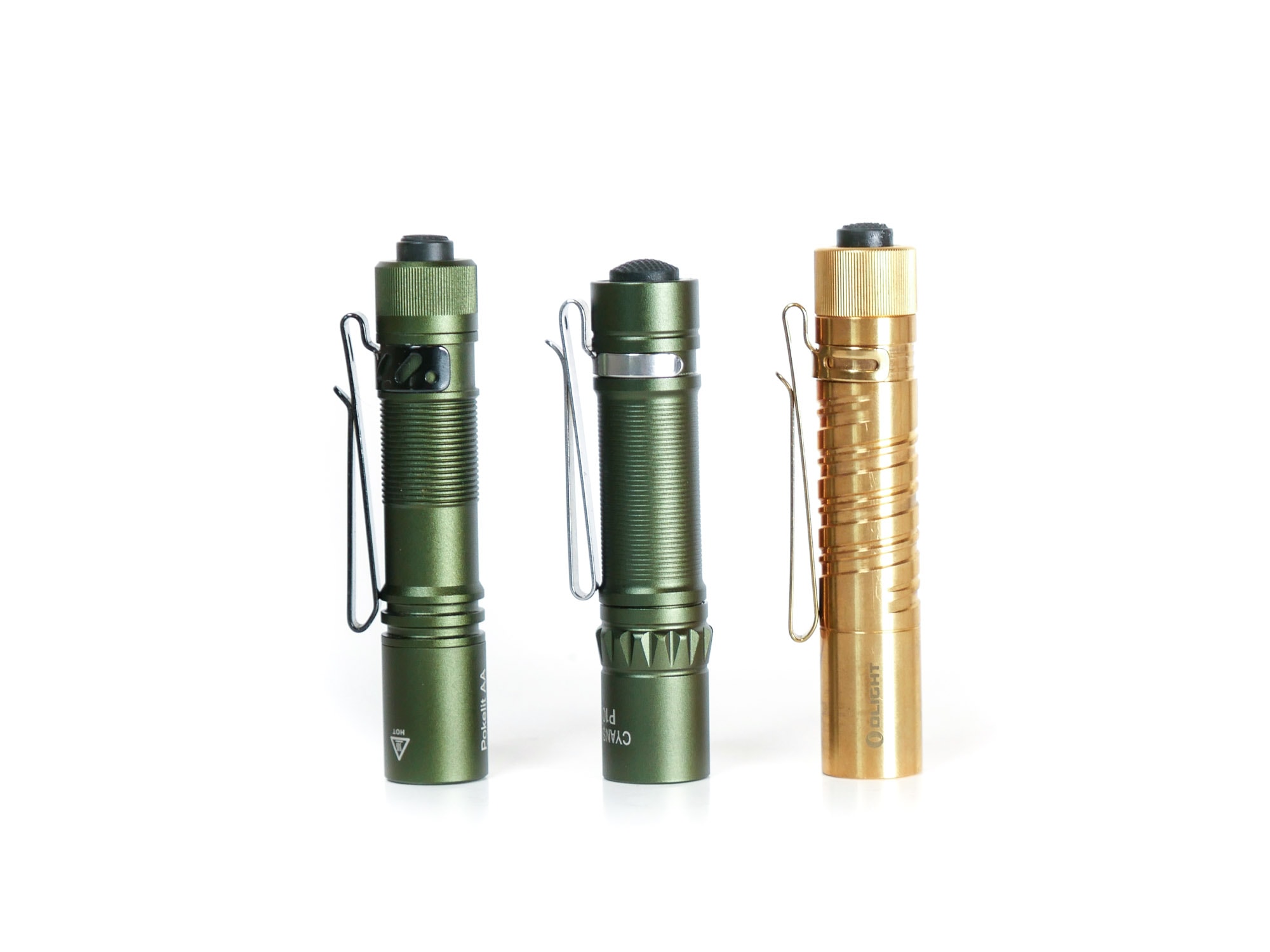
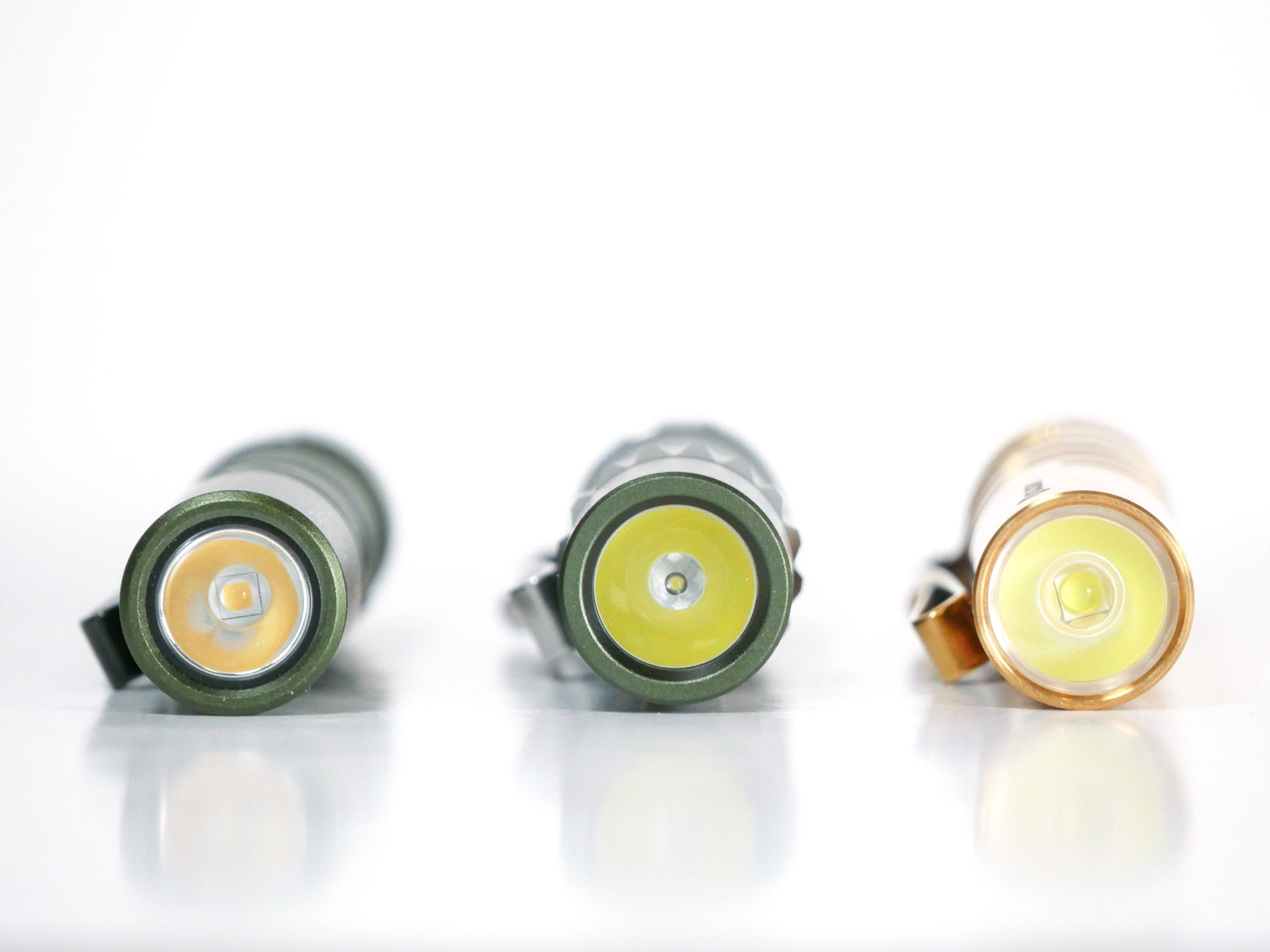
Cyansky P10 UI: User Interface and Driver
There is no need to unlock the Cyansky P10 prior to use. Just put in a battery and go.
Available modes:
- Low, Medium, High
From OFF:
- Half-press: Select between low, medium and high.
- Single click: Fully engage whatever mode is currently selected.
From ON:
- 1 click: Shuts light off.
Mode memory:
- The P10 will remember the last used mode.
Low voltage warning:
- The LED will flash 3 times every 3 minutes to let you know the battery voltage is low and it is time to replace batteries.
Lock-out mode:
- A quarter turn of the head will break contact as a form of lockout.
PWM
- No PWM present.
Additional/summary info on the UI:
- This is a perfect example of simplicity. just half press the button until it is in the mode you want, and then press all the way to lock in the desired output.
- In High, the light will step down after 120 seconds automatically to 200 lumens to avoid permanent damage to the LED from high heat.
Cyansky P10 Charging and batteries
There is no onboard charging provided on the P10. This trim did not ship with a single ‘Flydeer’ branded 1.5V alkaline battery, but also accepts single AA NI-MH cells running at 1.2V. Cyansky specifically says to not use 14500 Li-Ion cells as this would result in damage to the board and I believe them. Jumping from 1.5 volts to (up to) 4.2 volts could fry the driver in a second.
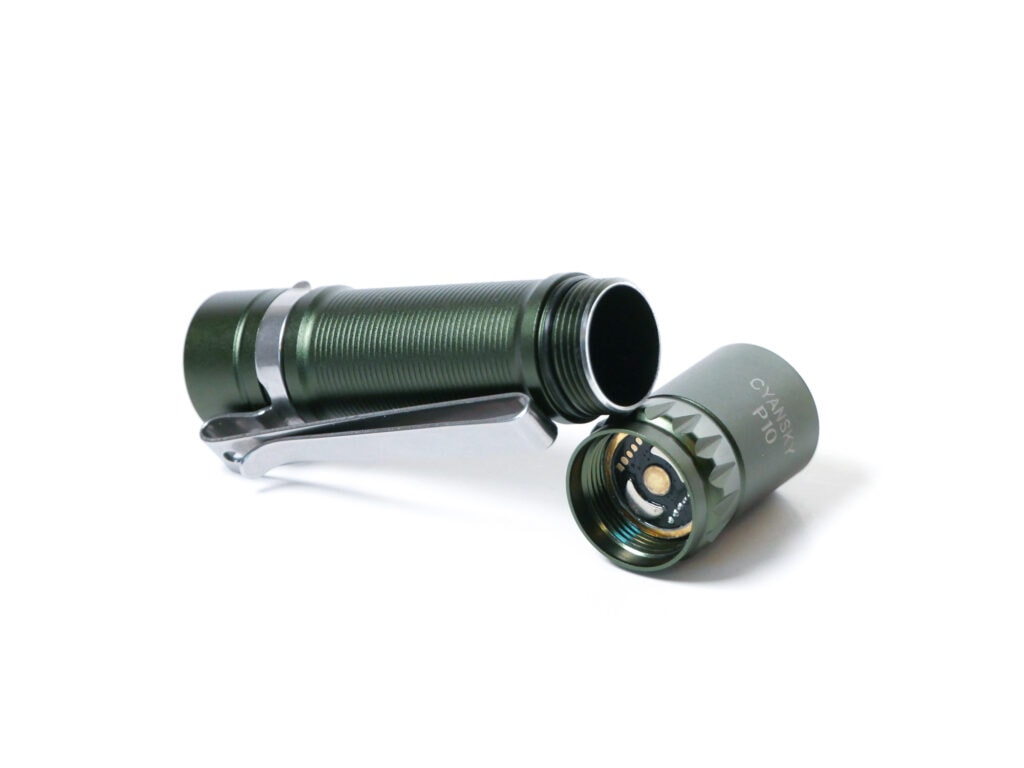
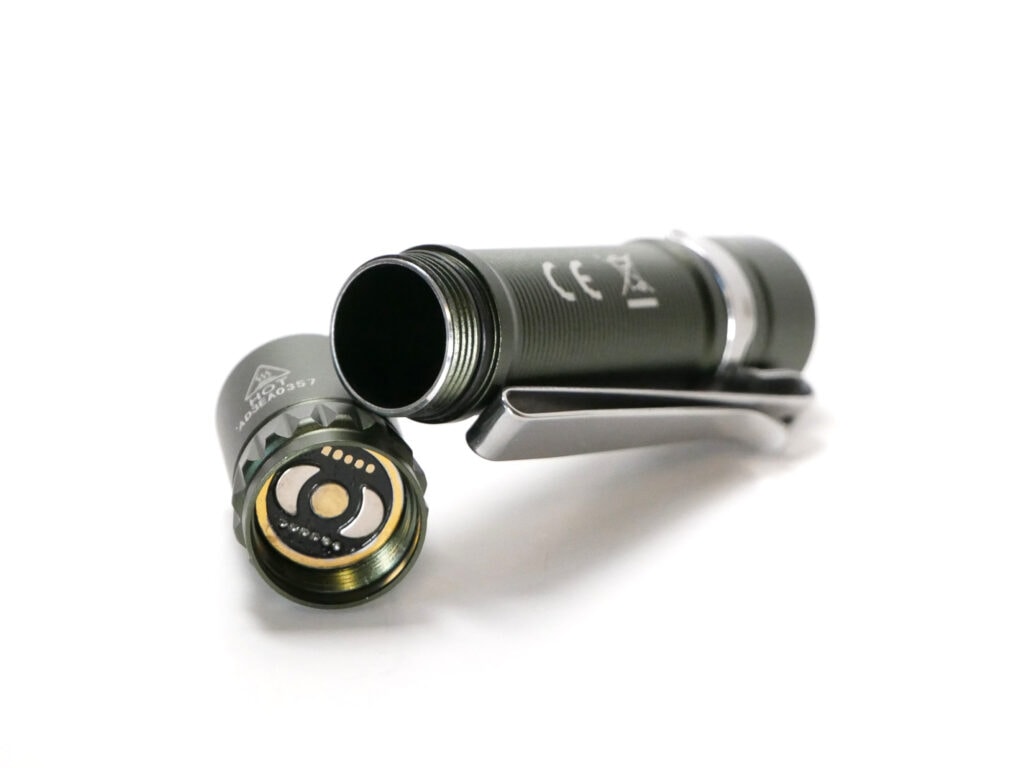
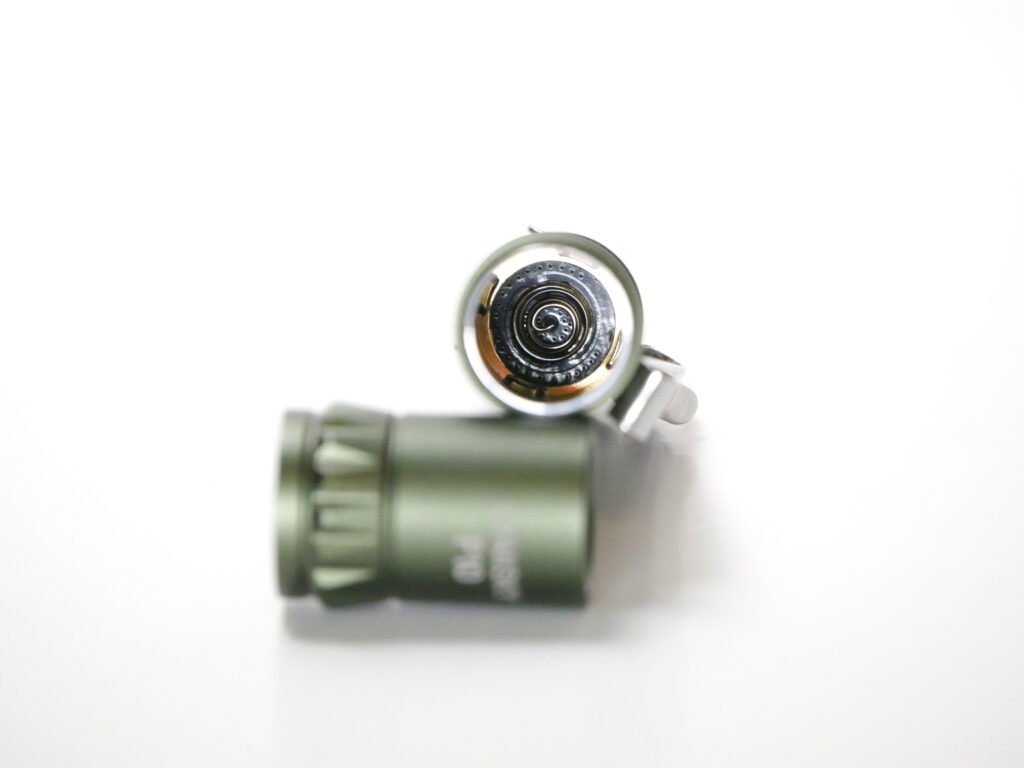
Performance test
For my output measurements, I utilized a purpose built integrating sphere and an ExTech SDL400 datalogging light meter. These figures were compared to a tested, known light source. All tests were performed with both fresh alkaline and fully charged NI-MH batteries after a complete charge cycle. The exact batteries used in this case are Rayovac High Energy for the alkalines and Amazon Basics NI-MH for the rechargeables.
Lumen measurements (for each mode)
| Mode (Alkaline) | Specs | turn on | 30 sec | 10 minutes |
|---|---|---|---|---|
| Low | 3 lm | 2 lm | 2 lm | 2 lm |
| Med | 50 lm | 27 lm | 27 lm | 27 lm |
| High | 300 lm | 241 lm | 212 lm | 28 lm |
| Mode (NI-MH) | Specs | turn on | 30 sec | 10 minutes |
|---|---|---|---|---|
| Low | 3 lm | 2 lm | 2 lm | 2 lm |
| Med | 50 lm | 27 lm | 27 lm | 27 lm |
| High | 350 lm | 335 lm | 212 lm | 133 lm |
Battery Life: Runtime graphs
I ran through low, medium, high and Turbo with both Rayovac Alkaline AA and completely charged Amazon Basic Rechargeable Ni-MH batteries and performed all tests until the light shut off or 24 hours had passed.
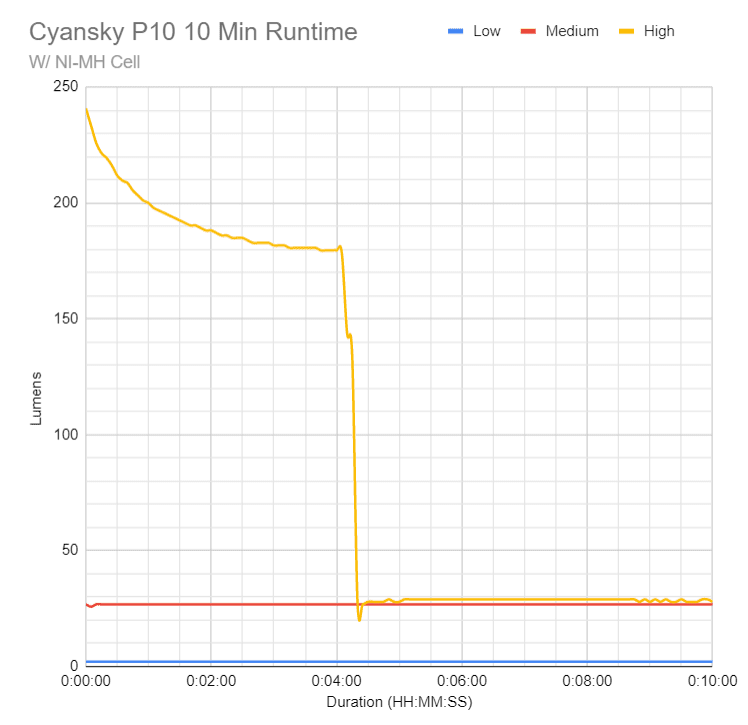
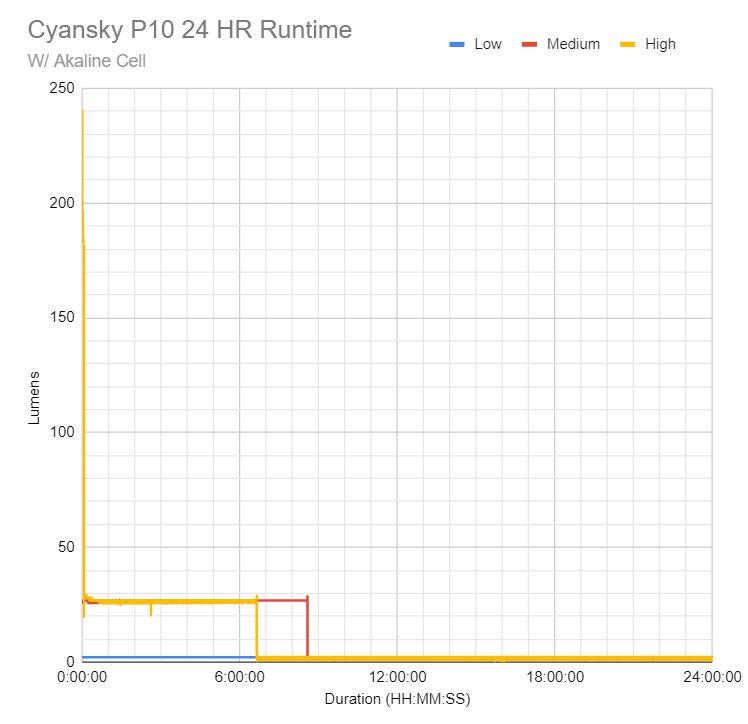
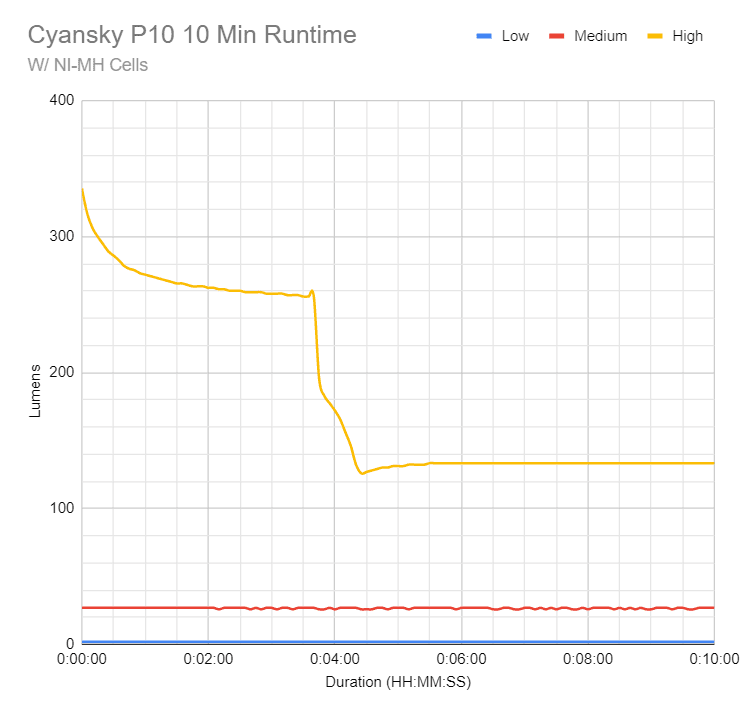
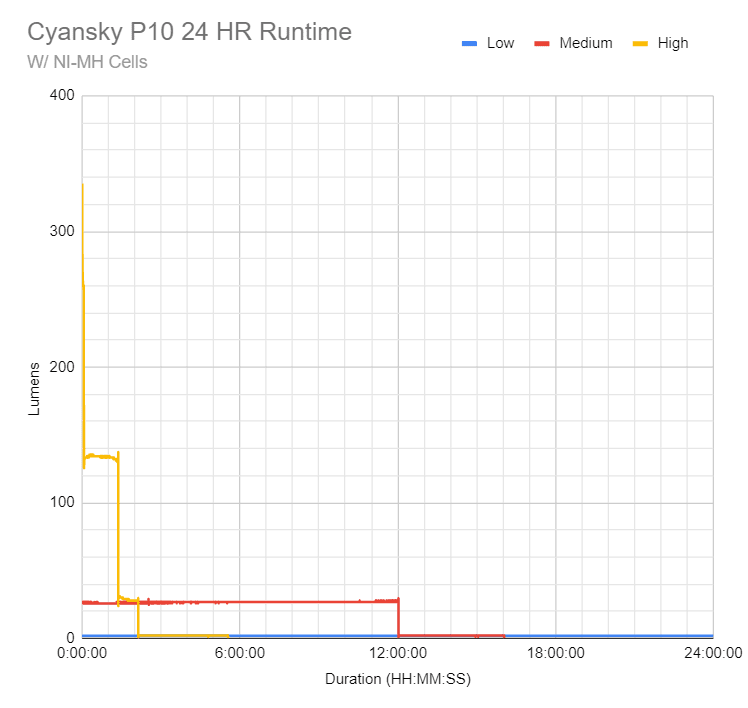
| Mode (Alkaline) | Specified | Measured runtime ANSI | Time till shut off |
|---|---|---|---|
| Low | 168h | 24h+ | 24h+ |
| Med | 17h | 8h 35min | 24h+ |
| High | 3h | 6h 39min | 24h+ |
| Mode (NI-MH) | Specified | Measured runtime ANSI | Time till shut off |
|---|---|---|---|
| Low | 150h | 24h+ | 24h+ |
| Med | 14h | 12h 2min | 16h 3min |
| High | 2h | 1h 46min | 5h 33min |
Obviously I was not able to get an accurate measurement for the low runtimes, but these were tested for a full 24 hours to verify that there weren’t going to be any problems arising. With alkaline cells, the measurements seemed to vary wildly from the specifications, but this could be due to different chemical makeup and composition of cells from manufacturer to manufacturer.
About ANSI FL1 standards: The runtime is measured until the light drops to 10% of its initial output (30 seconds after turning on). This does not mean that the flashlight is not usable anymore. The last column shows how long the light actually works till it shuts off. If there is a + symbol, it means that the test was stopped at that particular point, but the light was actually still running. This happens on certain occasions, with certain drivers, firmware, or batteries.
Peak beam intensity and beam distance measurements
| Mode | Specs | Candela measured | Meters | Yards |
|---|---|---|---|---|
| Medium | 289cd | 275cd | 16.6m | 18.2yd |
| High | 1122cd | 650cd | 51m | 55.8yd |
Low did not measure on my Opple lightmaster, so for ease of use, let’s just leave this one out of the equation. In medium, the results were admirably accurate. However, in high, the results spoke for themselves and I don’t think Cyansky is going to like the story they tell. Rated at 1122cd and 67m, the best numbers I was able to pull were more than 15 meters shy and this was after verifying the battery was topped off to its entirety.
About peak beam intensity: Peak beam distance according to ANSI FL1 standards: The calculated value of distance in meters at which the flashlight produces a light intensity of 0.25 lux. (0.25 lux is about the brightness of a full moon shining on an object). The columns ‘Meters’ and ‘Yards’ use rounded numbers.
Beamshots
Camera settings and distance: Panasonic Lumix G7 with ISO 5000 and ev0.0 at 70y.
Beamshots of the following flashlights compared:
- Cyansky P10 (NI-MH)
- Olight i5T (NI-MH)
- Acebeam Pokelit AA



Disclaimer: This flashlight was sent to me for review at no cost by Cyansky. I have not been paid to review, nor have I been holding back on problems or defects.
Final Verdict
Pros
- Fantastic throw measurements
- Unique machining
- Alkaline or NI-MH cells
- Well spaced modes
Cons
- Thin/wearing anodizing
- Loose pocket clip
- Under specifications for output
Explanation on star ratings:
1: Avoid: a match would be a better choice – 2: Poor: significant defect or issues; almost unusable – 3: Average: some defects or issues; but still usable 4: Good: recommended (minor issues) – 5: Great: highly recommended

4 stars: ★★★★
While our star rating provides a reliable indicator, we encourage you to read the full review to make an informed decision based on your own needs and preferences.
Getting it out of the way, the only real issues I had with the light were the low output compared to what I should have been seeing, as well as what appears to be thin anodizing that wore off due to a loose pocket clip. Now, I can’t tell you if the low output was across the board or if it had to do with the makeup of these particular cells, but in some cases they were well below what should have been achieved. Now onto the anodizing. I would hope that a loose pocketclip would be an isolated event, as I have never experienced anything like this with a Cyansky product, but this is an issue that caused another issue. This wore through the anodizing on the pocket clip recess almost immediately. A flashlight is a tool and doesn’t have to look perfect, but I would hope that wear and tear can be pushed at least a little further down the road.
Now, all that aside, the P10 feels really good. Even though it is smaller, it fills the negative space in your grip quite well and the user interface is incredibly intuitive (as are most AA lights). I have always been a fan of the extremely small pocketable lights, and this is definitively in that spectrum. These style lights usually give a very dependable nature to a light and Cyansky did not provide an exception to that rule.
Adjusting the pocket clip for less movement and allowing the use of 3.7v cells (not required) would make this all the more exciting in my book, but as it stands, The UI has decent spacing and helps elevate the light. The Cyansky P10 is no slouch and well deserving of 4 stars.
Buy your Cyansky P10 here
1lumen selects and reviews products personally. We may earn affiliate commissions through our links, which help support our testing.